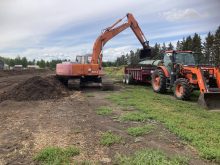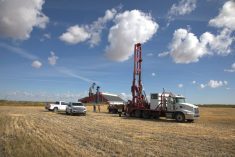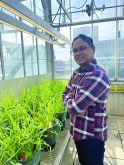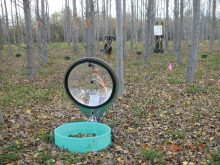Variable-rate fertilization features heavily in Ottawa’s plan to cut greenhouse gas emissions. But beyond the green factor, does variable rate pay off?
Yes, say two longtime users and an agronomist who helps farmers implement the practice.
Applying the right amount of the right fertilizer at the right time in the right place — a.k.a. 4R stewardship — is a long-standing practice on David Carlson’s 3,300-acre grain farm near Gwynne. The family was even an early adopter of variable rate.
Read Also
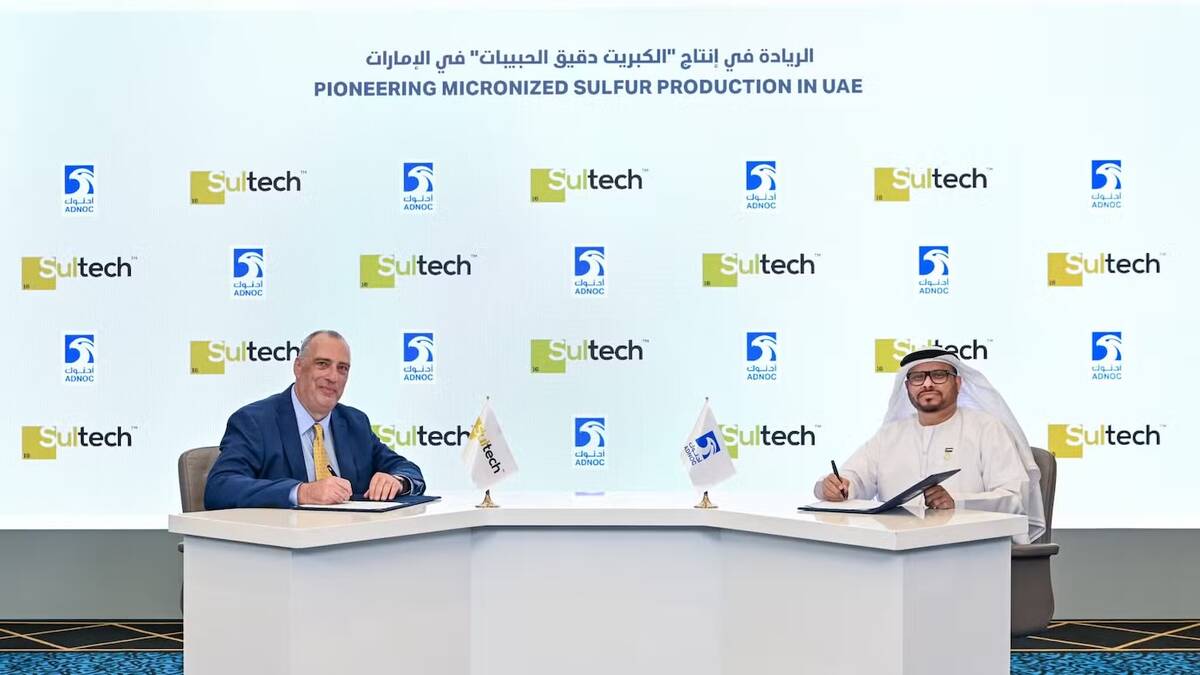
Calgary based ag-tech company signs partnership to bring next-generation micronized elemental sulphur technology to the UAE
Sultech Global signed an agreement with ADNOC Sour Gas to bring micronized elemental sulphur to the UAE.
“Dad was doing it decades ago, but it was all done manually, based on knowledge and mostly to do with nitrogen,” said Carlson. “Very seat of the pants, so to speak.”
Last year, Carlson tried fully automated variable rate on a few quarters. Pleased with the results, this year the whole farm is getting the high-tech treatment — with electrical conductivity (EC) mapping, ground truthing and soil testing done by precision ag firm Croptimistic Technology. The company uses SWAT (soil, water and topography) maps to define areas that respond to higher rates and also identify those where rates can be reduced without affecting yields.
“The SWAT system with the EC seem to produce some very, very usable maps compared to typically the maps we’d used,” said Carlson, adding his land has a lot of variability and fertility can vary greatly year to year in low spots.
“They really made sense as you’re sitting on the drill, seeding and watching exactly what it’s doing.”
Saving on fertilizer costs is a small benefit in Carlson’s case. His total fertilizer usage dropped by only 10 per cent, though he used 30 per cent less sulphur based on the maps. Rather, the goal was to get more bang for his fertilizer buck.
“It’s eliminating fertilizer waste on areas of the field that cannot utilize it,” he said. “So in that sense for environmental stewardship, that’s a huge step forward.
“The net benefit for the environment obviously is there should be very minimal loss of the fertilizer applied. So that’s huge. That’s very significant.”
While variable rate does lower fertilizer emissions, that shouldn’t be the main focus, said Wes Anderson, Beaumont-based vice-president of agronomy with Croptimistic Technology, which is headquartered in Saskatchewan.

“That (emissions reduction) is the part that the government is making us about. You know, we can’t get too distracted by that,” said Anderson. “At the end of the day, if you’re spending $50 an acre in nitrogen and it’s providing absolutely no return, that’s just a waste of $50 an acre.
“First and foremost, the big focus is just simply a better ROI (return on investment) on anything applied to the field.”
A more detailed approach
But you can’t take a cookie-cutter approach with variable rate, said Anderson.
Satellite images and yield maps are useful, but what worked last year only tells part of the story. The previous crop, moisture conditions this year, and nutrient levels heading into spring can all have an impact.
Older, less reliable approaches might be why some farmers remain cautious of variable rate, said Anderson.
“Companies that entered the market early, offering variable-rate services, really took a bit of a tough approach and weren’t very successful,” he said. “Unfortunately, I think some farmers have been victims of that early learning process where there was some unsuccessful methodology employed that gave them a bad taste in their mouth.”
It can be tempting to look for easy fixes, but that often doesn’t pan out, said Kurt Melnyk, who crops 3,000 acres near Waskatenau.
“We tried a few things in the past with micronutrients and, you know, some snake oil stuff to try out and look for that added edge,” said Melnyk. “When that didn’t work, we went back to the macronutrient approach and that basically focused around nitrogen efficiency on the farm.”

Those failed attempts not only didn’t work but cost more than it takes to employ variable rate, he added.
Melnyk has been employing variable-rate fertilizing since 2018 and said the costs to get started were reasonable, although he noted the initial investment will be more if old equipment needs replacing or retrofitting.
But a major economic plus is that variable rate allows you to increase production instead of chasing acres and expanding, he said.
Like Carlson, Melnyk didn’t see a big drop in the amount of fertilizer he used. And he doesn’t expect to get higher yields for the same amount of fertilizer every year — that depends on the weather. But he said the approach will pay off over the longer term and that, in turn, allows him to increase production without buying more land.
It’s an investment in the future through soil management that will pay dividends over time, he said.
“Our soils are the known variable. And if we can control that on an inter-field basis within those different regions and zones within each field, it sets us up for success,” said Melnyk. “Whether it rains or not isn’t really up to us.
“The value’s there. It’s just a matter of Mother Nature co-operating if we realize those potential benefits.”



